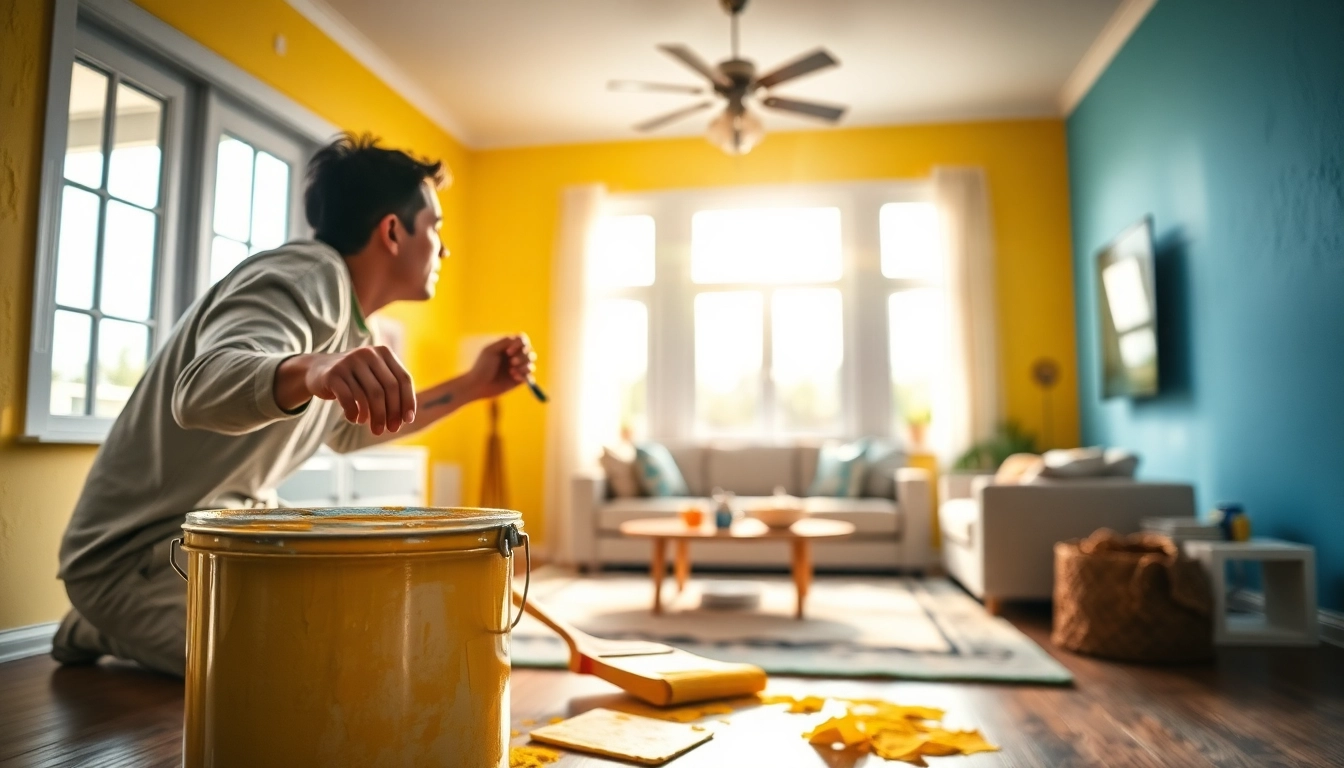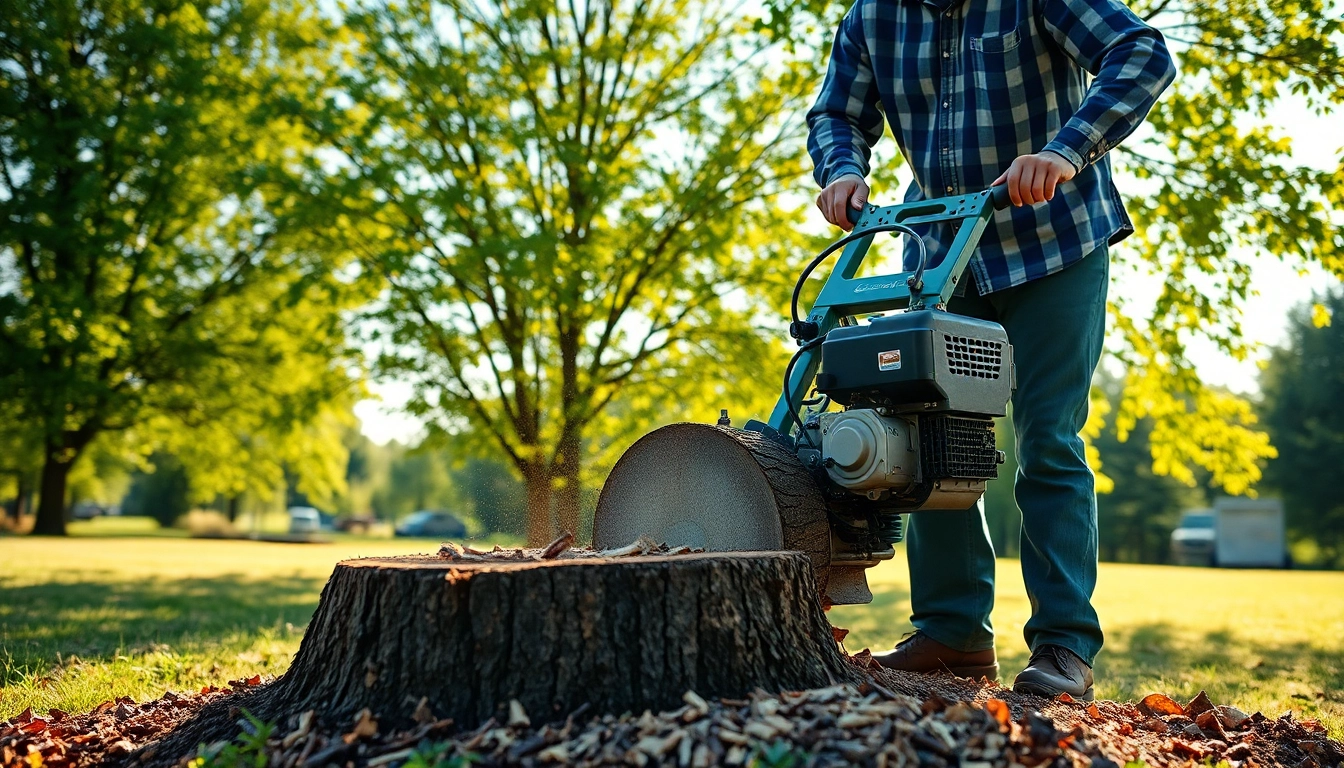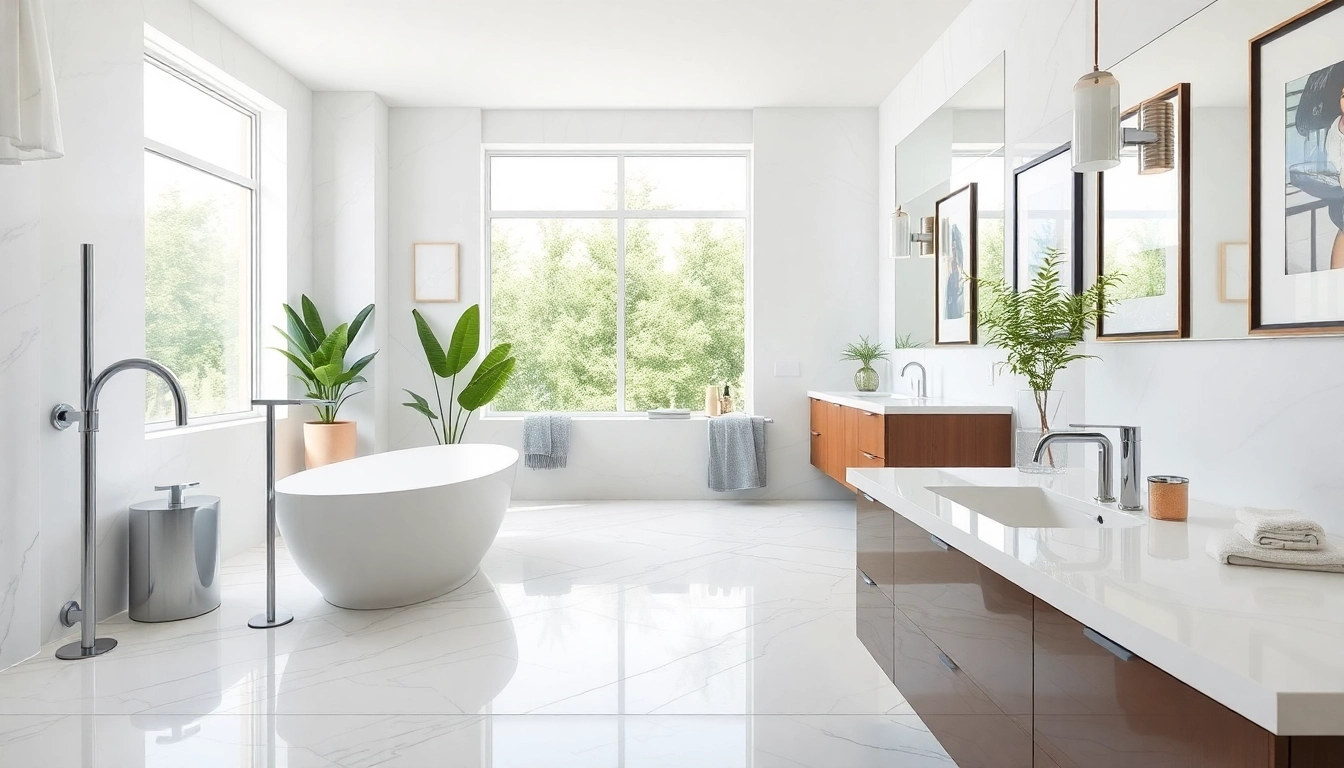Understanding Interior Painting Basics
What is Interior Painting?
Interior painting refers to the process of applying paint to the interior surfaces of a building. This typically includes walls, ceilings, trim, and even furniture. While it may sound simple, achieving a professional finish involves careful preparation, equipment, and techniques that elevate the aesthetics and longevity of the finished product. Whether you are refreshing your space or completely redesigning a room, understanding the art of interior painting is vital.
Benefits of Professional Interior Painting
While some homeowners opt for a DIY approach, hiring professionals can lead to significant advantages:
- Quality Finish: Professional painters have the necessary skills and tools to achieve a flawless finish that amateurs might struggle to replicate.
- Time-Saving: Experienced painters can complete the job in a fraction of the time it would take a DIYer, letting you enjoy your newly painted surroundings sooner.
- Expert Advice: Professionals can offer valuable advice on color choices, paint types, and trends that enhance the overall look of your home.
- Less Mess: With the right tools and techniques, professional painters minimize mess and ensure a clean environment throughout the painting process.
Choosing the Right Paint Types for Your Project
The paint you choose significantly contributes to the outcome of your interior painting project. Key considerations include:
- Finish: Paint finishes vary from matte to glossy. Matte finishes can hide imperfections, while glossy finishes are durable and easier to clean.
- Type: Options typically include latex and oil-based paints. Latex paints are popular for their quick drying time and easy clean-up. Oil-based paints offer a smoother finish but require solvent for cleanup.
- Color: Selecting the right color is critical to achieving the desired mood and atmosphere in a room. Soft shades can create a calming environment, while bold colors may energize a space.
Preparing for Your Interior Painting Project
Step-by-Step Room Preparation
To ensure a successful interior painting job, preparation is key. Here are the essential steps:
- Clear the Room: Remove furniture and fixtures from the room. If large furniture can’t be moved, make sure it’s covered with drop cloths.
- Repair the Walls: Fill any holes, cracks, or imperfections with spackle or drywall compound. Sand the areas once dry for a smooth finish.
- Clean the Surfaces: Dust and clean walls to ensure proper adhesion of the paint.
- Tape Areas: Use painter’s tape to protect trims, windows, and ceilings from paint splatters.
- Lay Down Drop Cloths: Protect the flooring with drop cloths to catch any spills.
Essential Tools and Materials You’ll Need
Equipping yourself with the right materials is critical. Here’s a checklist:
- Painting brushes (various sizes)
- Rollers with covers (different nap lengths)
- Paint trays
- Drop cloths
- Painter’s tape
- Sandpaper and a sanding block
- Spackle and putty knife
- Paint stirrers
- Ladder
- Protective gear (gloves, mask, goggles)
Color Selection Strategies for Interior Spaces
Choosing colors for your interior painting project involves more than just personal preference. Consider these strategies:
- Create a Mood: Different colors evoke various feelings. Soft blues and greens promote calm, while bright yellows and oranges can energize a space.
- Consider Lighting: The type of light (natural vs. artificial) affects how paint colors appear. Always sample a paint swatch in the actual room lighting before committing.
- Use Color Palettes: Create a cohesive look by using color palettes. Pick a primary color, then choose complementary colors for accents.
Best Practices in Interior Painting
Techniques for a Flawless Finish
Achieving a professional-grade finish requires technique. Here are expert tips for a successful interior paint job:
- Start with the Ceiling: Always paint the ceiling first to avoid drips on walls. Use a roller for broad areas and a brush for edges.
- Walls Next: Utilize a roller for large wall areas and a brush for corners and edges.
- Apply Multiple Coats: Two to three coats may be necessary for a uniform look, especially with lighter colors over dark.
- Finish with Trim: Leave the trim for last to ensure crisp lines and a polished look.
Common Mistakes to Avoid During Painting
Many DIY painters encounter common pitfalls. Avoid these mistakes for a better outcome:
- Skipping Primer: Priming can make a significant difference in coverage and color accuracy, especially over repaired surfaces or dark colors.
- Rushing the Job: Take your time, allow adequate drying time, and resist the urge to cut corners.
- Not Using Quality Supplies: Investing in high-quality paints and tools can save time and effort while enhancing results.
How to Use Textures and Finishes Effectively
Textures and finishes can add depth and character to your interiors. Here’s how to effectively use them:
- Choose the Right Texture: Techniques like sponge, rag rolling, or stippling create unique effects and can be used to hide imperfections.
- Consider Specialty Finishes: High-gloss finishes are ideal for rooms that see high traffic, while textured finishes can add warmth.
- Accent Walls: Use texture or bold colors on accent walls to create focal points in your rooms.
Cost Factors in Interior Painting
Understanding Average Costs of Interior Painting
The cost to paint a room can vary fiercely based on several factors, including:
- Size of the Room: Larger rooms require more paint and longer labor.
- Type of Paint: Quality paint costs more but offers better coverage and longevity.
- Professional vs. DIY: Hiring professionals incurs labor costs but often results in better quality.
On average, the cost to paint a room can range from $400 to $1,800, depending on these variables.
How to Budget for Your Painting Project
Budgeting for an interior painting project requires careful planning:
- Estimate Size: Calculate total wall space by measuring the height and width of each wall.
- Decide on Paint Type: Factor in the costs of paint and supplies when creating your budget.
- Include Labor Costs: If hiring professionals, obtain and compare quotes from different painters.
- Set a Contingency Fund: Reserve about 10-15% of your total budget for unexpected expenses.
When to DIY vs. Hire Professionals
Deciding whether to tackle a painting project yourself or hire a professional can be challenging. Consider the following:
- Experience and Skill Level: If you have prior painting experience, you may feel comfortable completing the project yourself. Newcomers might struggle with techniques.
- Time Availability: If you have a busy schedule, hiring professionals can save time.
- Scope of the Project: Large or complex projects, such as those with intricate details, are typically better suited for professional painters.
Post-Painting Care and Maintenance
How to Maintain Your Newly Painted Walls
Once the painting is complete, maintaining your new finish is crucial for longevity. Here’s how to care for your walls:
- Regular Cleaning: Dust walls regularly with a microfiber cloth and wash them down with a damp sponge or cloth quarterly.
- Avoid Harsh Chemicals: Use gentle cleaners to avoid damaging the paint finish.
- Inspect for Damage: Regularly check for scratches or scuffs and repair them immediately to maintain appearance.
Repairing Common Painting Issues
Over time, various issues may arise, including:
- Peeling Paint: This often occurs due to moisture. Scrape off the peeling areas, clean the surface, and repaint.
- Stains and Marks: Use touch-up paint for scuffs or marks that may occur over time.
- Color Fading: Direct sunlight can fade paint, so consider using UV-resistant paints in sunlit areas.
When to Repaint: Signs That Your Interior Needs a Refresh
Knowing when to repaint ensures your interior looks its best. Signs you might need a refresh include:
- Visible wear and tear, such as chips, cracks, or peeling paint.
- Faded colors or finishes that no longer match your decor.
- When you want to update or change the look due to style changes or selling your home.



